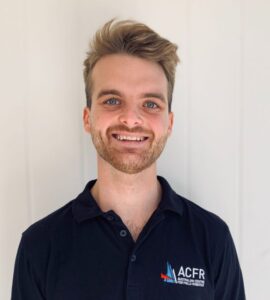Sydney-based Seascape Autonomy is reshaping how we see and manage our oceans, with advanced underwater robotics that deliver detailed, high-resolution seafloor imagery at scale.
As the runner-up in Australia’s first Propel-AIR accelerator, this visionary deep-tech company is making waves with its next-generation autonomous underwater vehicles (AUVs).
Compact, agile, and engineered to operate at depths up to 300 metres, the company’s flagship Seeker AUV offers landscape-scale optical mapping of the seafloor—delivering data of unmatched resolution and clarity.

The Seeker is enabling a new era of environmental monitoring, offshore energy development, and sovereign defence readiness.
Designed and built in Australia by robotics experts Professor Stefan Williams and Dr Jackson Shields, the Seeker replaces outdated subsea methods such as diver surveys or towed cameras.
“We built the Seeker to meet the urgent need for detailed subsea data in sectors like environmental assessment, offshore energy, and defence,” said Professor Williams.
“It’s cost-effective, scalable, and produces decision-grade information.”
From shallow reefs to sovereign seas: ocean tech for real-world impact
Seascape Autonomy’s technology is already making an impact across diverse environments, from the reefs of Tonga to the ports of Victoria.
- High-resolution seafloor imaging: The Seeker stitches thousands of optical images into 3D maps with species-level detail—an unprecedented capability in underwater robotics.
- Agile and scalable: Compact and easily deployed, Seeker vehicles can be operated in parallel to cover vast marine areas, reducing the cost and complexity of large-scale surveys.
- Built for critical missions: Applications include offshore wind development, ecological surveys, archaeological documentation, and mine countermeasure operations for defence.
- Data that drives decisions: The clarity and resolution of the data empowers faster, more informed decisions—whether protecting marine ecosystems or planning infrastructure.
Designed and built in Australia, for our environment and economy
The company is a spinoff from the Australian Centre for Robotics at the University of Sydney and was initially funded through the Defence CRC for Trusted Autonomous Systems. With support from an Australian Economic Accelerator grant, Seascape is now building its fifth AUV and accelerating commercial readiness.
Dr Shields, a specialist in multi-vehicle path planning, leads the charge in scaling the company’s technology through fleet deployments and survey-as-a-service models.

“We believe this capability will reshape marine environmental data collection,” said Dr Shields.“It’s about unlocking insights at scale—faster, cheaper, and with much higher fidelity than anything currently available.”
Propel-AIR: expanding reach, refining the mission
Participation in ARM Hub’s Propel-AIR sprint gave Seascape Autonomy the opportunity to refine its commercial model and sharpen its investor pitch.
“Propel-AIR has opened doors and brought clarity to our commercialisation pathway,” said Professor Williams. “It’s an exciting time to be building this capability in Australia.”
A blueprint for ocean-based sovereign capability
As climate challenges, energy transition, and defence readiness push nations to better understand and manage marine environments, Australia is well-placed to lead.
By combining deep research with commercial intent, Seascape Autonomy is building tools that support economic development, environmental resilience, and sovereign control of our vast maritime zone.
“This is Future Made in Australia beneath the surface,” said ARM Hub CEO Professor Cori Stewart. “Seascape Autonomy is putting world-leading marine robotics in Australian hands. backing our industries, protecting our ecosystems, and securing our sovereignty.”